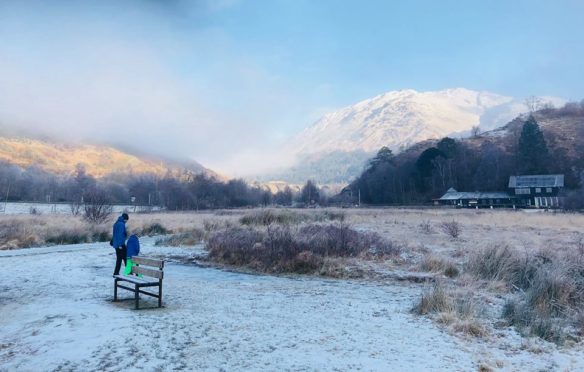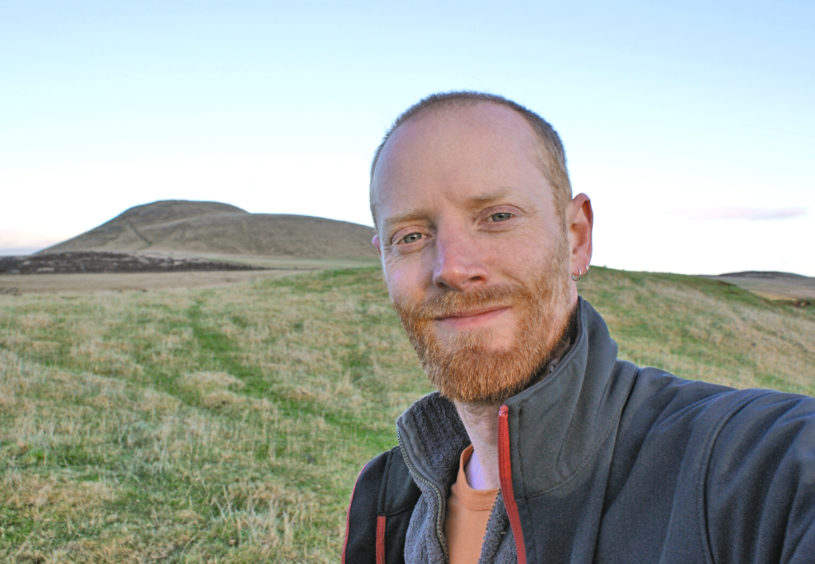Wake me up in November!
That’s something I (half) jokingly say to people as the days lengthen, the snow disappears from the hills and the freshness of spring gives way to the stickiness of summer.
I daresay that summer 2020 is one we’d all rather have slept through due to you-know-what, but in most years I’d still opt to hibernate through summer if I could.
The warm days and mild mornings. The humidity and rain. Bright sunshine at 5am and a lack of sleep on short twilight nights.
The pollen-induced wheezing and the insect-fuelled histamine. Summer might signify vibrancy, brightness and life, but invariably it makes me feel the opposite. It makes me feel tired, itchy and lethargic.
On the hill in summer my lung capacity feels reduced and my legs heavy, but last week, on my first frosty hillwalk of the season, I felt an energy I’d not felt in months. I felt lighter, brighter, generally more alive, like being in a Duracell advert.
Sleeping through summer isn’t quite as ridiculous as it sounds, though. Biology even has a word for it – “aestivation”, which the Oxford Dictionary describes as the “prolonged torpor or dormancy of an animal during a hot or dry period”.
True, hot or dry probably challenges most people’s idea of what Scottish summer is like and yes, it’s also true that aestivation is more commonly used to describe amphibians and insects in arid environments rather than pasty white translucent redheads in soggy old Scotland.
But it’s entirely subjective, because one person’s soggy cold summer is another person’s sweaty humid sneezefest.
Adaptable as humans are, we’re still animals and it’s therefore not remotely unusual to feel one’s mental or physical condition governed by external environmental conditions. And like all animals, we all have our environmental niches where our bodies work best.
As someone physically predisposed to colder weather, how nice it would therefore be to go to sleep some time in April and let the midge months pass as only a hazy backdrop to my autumnal dreams.
Quite what my period of dormancy would look like is uncertain, but I’m fairly confident lounging on the sofa every day with the blinds closed, scrolling brainlessly through social media while Netflix babbles in the background, might actually qualify as “torpor” in biological terms.
My natural instinct would be to aestivate till November, stirring only when the sun is low and the winter hills are coming into condition, but I’d happily set the alarm for September and then hit snooze because, much as I love winter, I would hate to miss the autumn highlights.
And I’d hate to miss September in particular, because although it doesn’t represent the wholesale plunge into autumn proper, there is nonetheless something in the air worth savouring.
After what feels like months of stasis when nothing seems to change, suddenly change is everywhere.
September is April’s close sibling, where all manner of sensory cues provoke that feeling everything is in flux, the natural balance shifting from one thing to the next. And happily, I don’t need my own alarm clock to wake me up for it, because September has several of its own.
Bang on the first of the month this year, the robins in my garden assumed noticeably prominent positions and started singing. A week later, wave after wave of pink-footed geese arrived overhead, palpable relief in their “wink wink” calls as they finished their flights from Iceland and Greenland.
And just last week, I heard my first stags of autumn, roaring in the rut. The very sound of the Scottish autumn.
Other September cues are more subtle. Shadows have lengthened, the landscape has browned and hillwalking is noticeably more comfortable and stimulating.
But perhaps the most exciting cue of all is when the frost warning light in my car illuminates for the first time, which it did last week.
That said, “frost warning” was clearly named by someone who hates winter. “Frost advisory” would arguably be more neutral, although personally I’d rename it the “frost celebration” light.
Ultimately, it’s a combination of things that makes autumn a mix of melancholy, optimism, trepidation and excitement and in that respect, we’re off to a grand start.
We’re nowhere near “peak tree” yet of course. That occurs in late October/early November, although with constant Atlantic-driven wind and rain forecast for the first half of October, it remains to be seen whether there will be any autumn leaves left on the trees by then.
In any case, while the outlook is generally cool, proper cold still looks some distance away, so perhaps it’s time to hit “Snooze”.
Yep, wake me up in November!
Ben Dolphin is an outdoors enthusiast, countryside ranger and former president of Ramblers Scotland











